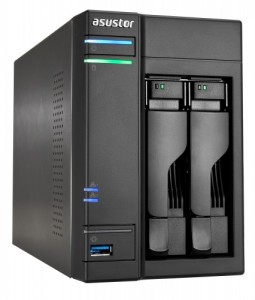
Intel has introduced two new network-attached storage (NAS) controllers for home and small business users.
The NAS platforms can support from two to six drives and can be used to share content in a home or be accessed remotely by mobile devices.
The new NAS controllers are based on dual-core Atom Cedarview-D processors.
One controller uses D2550 processor and the other the D2500 processor. Both chips have 1.86 GHz clock speeds.
The Intel NAS platform supports multiple operating systems, including Linux, but typically runs Windows Home Server 2008 R2.
The D2550 has a separate 640MHz graphics processor and HDMI code acceleration for processing and serving up high definition video and graphics, while the D2500 does not, according to Intel spokesman Rajgopal Ramamoorthy.
The new Atom chips also use 10 watts of power, three less than the predecessor chip, Ramamoorthy said.
On the low end, the NAS servers come in two-drive configurations but they can scale to six drives and up to 4GB of DDR3 RAM. One reseller, Acustor, is offering an eight-drive version by using a PCIe expansion unit.
A four drive NAS array from QNAP
David Tuhy, general manager of Intel’s Storage Group, said that the new NAS line is already being sold by three OEMs: Asustor, QNAP and Thecus. Others, such as Mpstor and Dane-Elec, are planning to begin selling D2550 and D2500 NAS products for small-businesses.
Depending on how many drives the NAS is configured to, data can be protected by RAID 0, 1 and 5. The RAID software is provided by McAfee, which Intel acquired last year.
The NAS devices can support up to 14 external USB 3.0 (5Gbps) ports.
According to Tuhy, current two-drive NAS boxes start at $299 and a four drive configuration sells for $500 and up.
The NAS servers are targeted for home use by consumers for storing movies, music, video games and other content that can then be played on a range of connected devices. For example, the servers have built-in hardware acceleration for video playback that allows consumers to connect HDMI-ready displays and watch 1080p HD video.
By using an HTML-based IP address to the Internet, a user can access the NAS via a graphical user interface or the NAS box can be made to look like a separate hard drive on a mobile device. Access to the NAS requires a password.
The Web-enabled access allows the NAS boxes to act as a personal cloud, letting users access files remotely using a variety of connected devices, including ultrabook computers, smartphones, tablets and laptops.
For small businesses, the NAS can be configured through graphical user interfaces to allow multiple users to securely access files from mobile devices.
“You have the ability to share files across connected devices so a salesperson in the field can see other people’s data with HTML interfaces,” Tuhy said.




